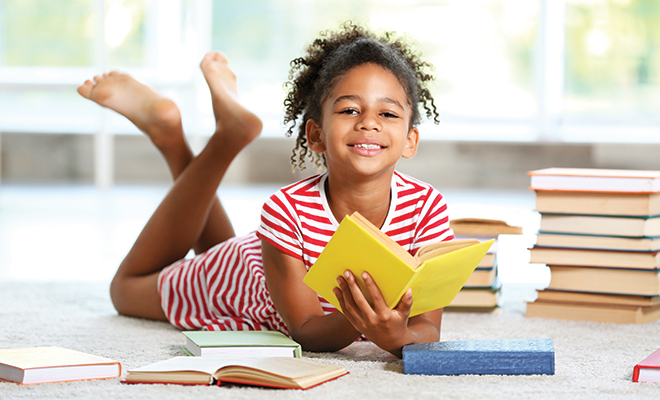
Read Your World: The Importance of Diversity in Children’s Books
Books play a huge part of all children’s lives. Numerous studies have also shown that reading to a child as few as 20 minutes per week will not only result in stronger readers, but ones who carry a love of literature into adulthood. But just as important as having quality books available for young readers is the ability for them to be able to see themselves within the pages of the books they read.
In 2013, children’s book publishing powerhouse Lee and Low Books pinpointed a very startling statistic that had parents and teachers puzzled and authors of children’s books buzzing with dismay. Lee and Low’s study showed that although 37 percent of the nation’s population consisted of people of color, only ten percent of the children’s books published over that last two decades have contained multicultural content. In a nutshell, children’s literature has largely been very white up until the last few years.
Multicultural children’s books typically are books that contain characters of color as well as characters that represent a minority point of view. These books share ideas, stories and information about cultures, race, religion, language and traditions that provide a portal for children to be able to connect to a diverse and richer world. This categorization also extends to supporting and showcasing authors of color and books that encourage dialogue around unique circumstances such as special needs, adoption and LGBTQ.
So why is this lack of diversity in children’s books an issue? Children’s literacy advocate First Book revealed a huge reason within their 2015 survey. Their study reported that 90 percent of the educators that First Book serves all agreed that the children in their programs were more enthusiastic readers when they had access to books with characters, stories and images that reflect their lives and their neighborhoods.
Although great strides have been made to correct the deficiency of diverse picture books and chapter books, authors, publishers, parents and educators all agree there still is a long way to go. Thanks to heightened awareness and powerful conversations about this topic, more diverse titles are making their way into classrooms and home book cases and the past whimper of protest has grown to a loud outcry for change. But misconceptions still linger and one big one is that multicultural books are only for so-called minorities. The reality is that these stories of cultures, religions, traditions, countries and ethnicities are suitable for all children. Luckily, that outcry has also spawned a plethora of new and robust resources for parents, teachers and librarians to utilize.
We Need Diverse Books™
We Need Diverse Books is a grassroots organization of children’s book lovers that advocates essential changes in the publishing industry to produce and promote literature that reflects and honors the lives of all young people. WNDB entered into a partnership with Scholastic Book Club in 2015 and 2016 to create We Need Diverse Books flyers, and the organization’s Booktalking Kits have also created seasonal lists with comparable titles. WNDB’s official hashtag is #WNDB
Reading Is Fundamental
For 50 years, Reading is Fundamental has stressed that getting good books into children’s hands makes a huge difference in reading outcomes. RIF also works with parents to foster literacy in the home and believes that reading aloud to children is the first and single most important thing families can do to help their children learn to read. RIF also has ongoing fundraising initiatives and a matching grant program through its Read for Success model that helps schools and community partners reduce summer learning loss for 3K through third grade students.
What books kids have access to in the classroom is still largely driven by what schools and libraries purchase. Although educators should continue to request quality books that reflect ALA, Caldecott and Newbery winners, the need is there to consider at lesser known multicultural titles and authors. Wonderful children’s books such as Maybe Something Beautiful by Isabel Campoy, One Plastic Bag by Miranda Paul or Malala Yousafzai: Warrior with Words by Karen Leggett Abouraya all offer great opportunities to educate and enchant readers of all ages. And since global travel is not in many families’ budgets, the next best thing is to encourage kids to learn about our world through the pages of a book.
So whether it’s a story before bedtime or during library day at school, the books our kids have access to should continue to reflect the diverse society that we live in. ■
Sources: blog.leeandlow.com, multiculturalchildrensbookday.com, rif.org, scholastic.com and weneeddiversebooks.org.







